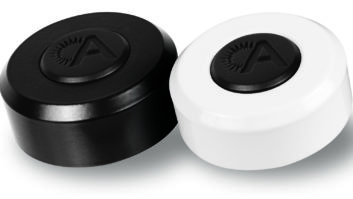
An illustration of the “acoustic cloak,” where the circle represents the “cloaked” object and the multicolored lines are sound waves
According to a study published by the Institute of Physics, researchers in Spain have proven that metamaterials — materials defined by their unusual man-made cellular structure — constructed with sonic crystals can be designed to produce an acoustic cloak to make objects impervious to sound waves; literally, diverting sound waves around an object. The idea of acoustic cloaking and its design was previously introduced by Cummer and Schurig.
The research — “Acoustic Cloaking in Two Dimensions: A Feasible Approach” by Daniel Torrent and José Sánchez-Dehesa from the Wave Phenomena Group, Department of Electronics Engineering at the Polytechnic University of Valencia — showed that optimum cloaking requires approximately 200 layers of the metamaterial, but there is scope for far-thinner materials to be used than current technology can produce.







